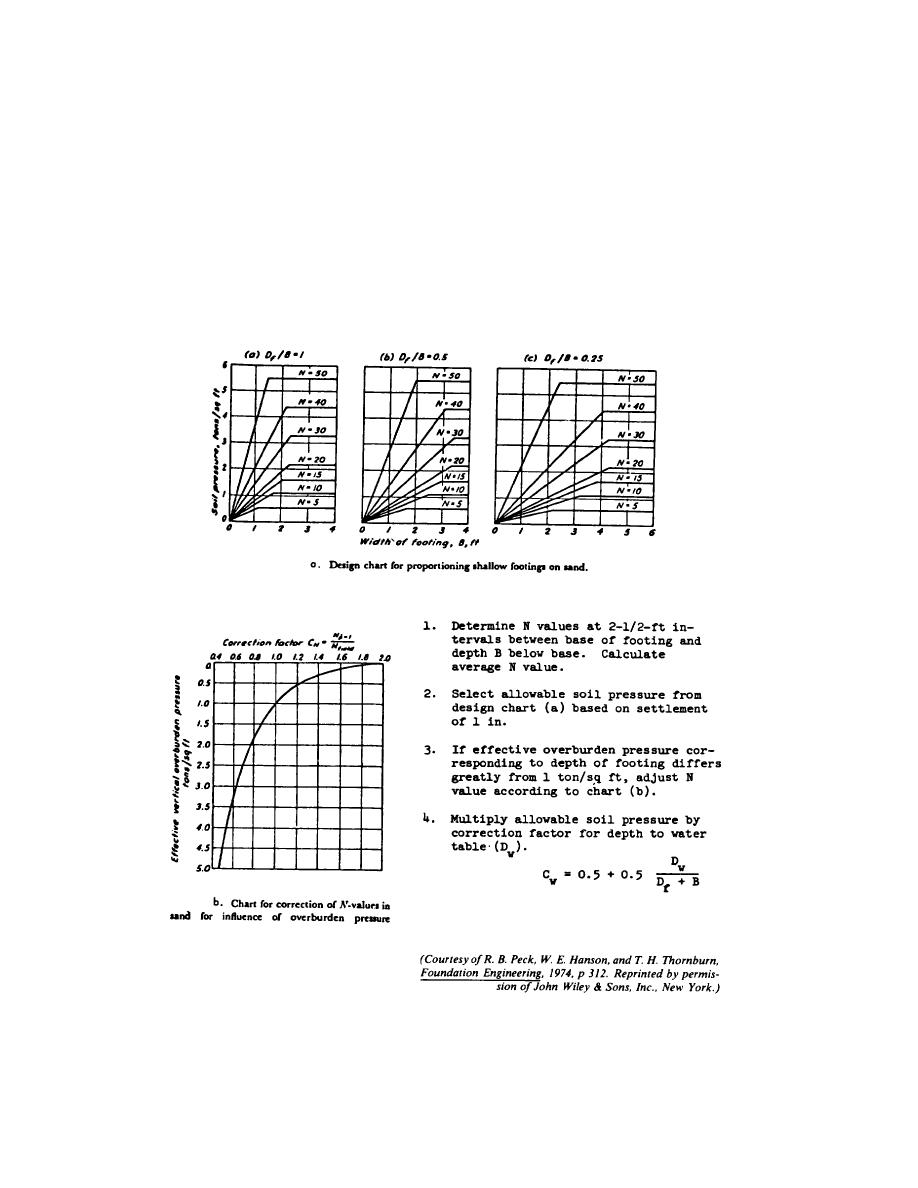
TM 5-818-1 / AFM 88-3, Chap. 7
may be subject to such effects. Replace or stabilize
analysis based on the theory for beams or plates on
such foundation soils, as discussed in chapter 16, if
elastic foundations. Determine the subgrade modulus by
these effects are anticipated.
the use of plate load tests. The method is suitable,
b. Conventional analysis.
Where the
particularly for mats on coarse-grained soils where
rigidity increases with depth.
differential settlement between columns will be small,
d. Analysis of mats on compressible soils. If
design the mat as reinforced concrete flat slab assuming
the mat is founded on compressible soils, determination
planar soil pressure distribution. The method is generally
of the distribution of the foundation pressures beneath
applicable where columns are more or less equally
the mat is complex. The distribution of foundation
spaced. For analysis, the mat is divided into mutually
pressures varies with time and depends on the
perpendicular strips.
c. Approximate plate analysis. When the
construction sequence and procedure,
elastic and
plastic deformation properties of the foundation concrete,
column loads differ appreciably or the columns are
and
irregularly spaced, the conventional method of analysis
becomes seriously in error. For these cases, use an
Figure 10-2. Proportioning footings on cohesionless soils.
10-3



 Previous Page
Previous Page
